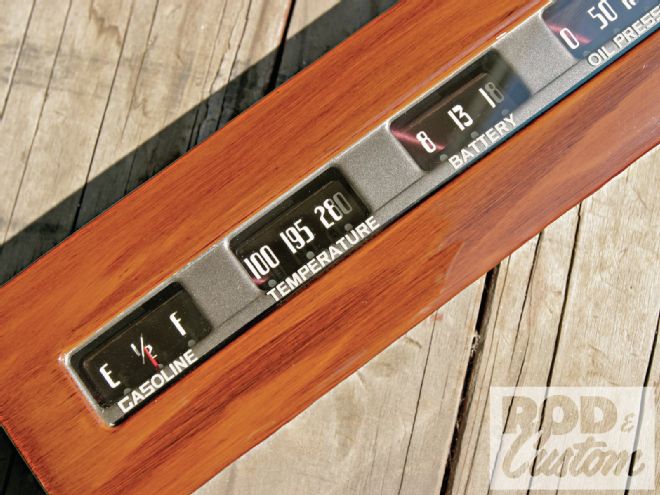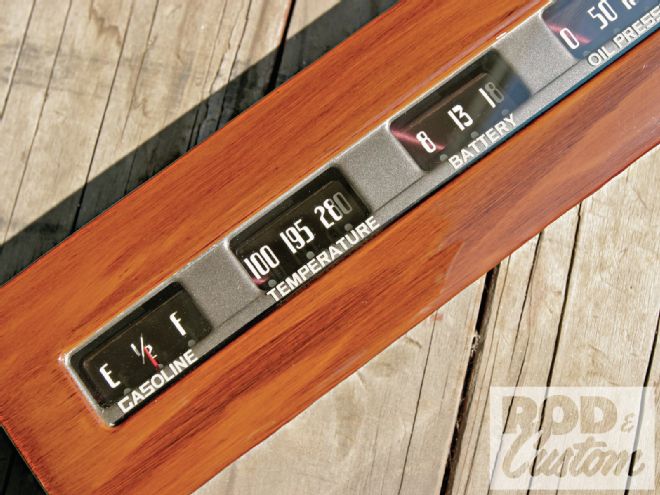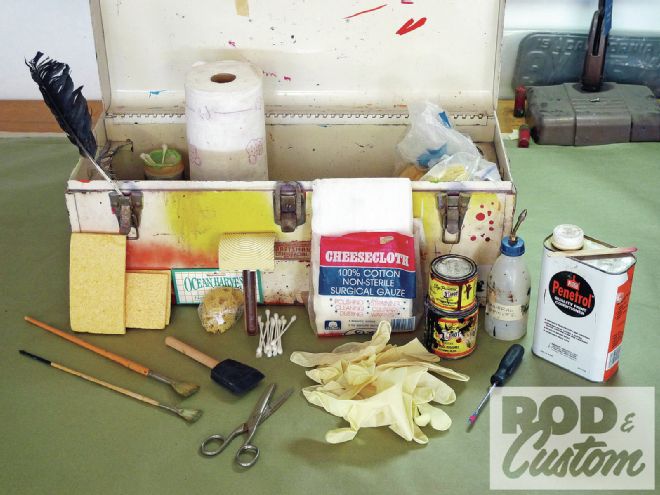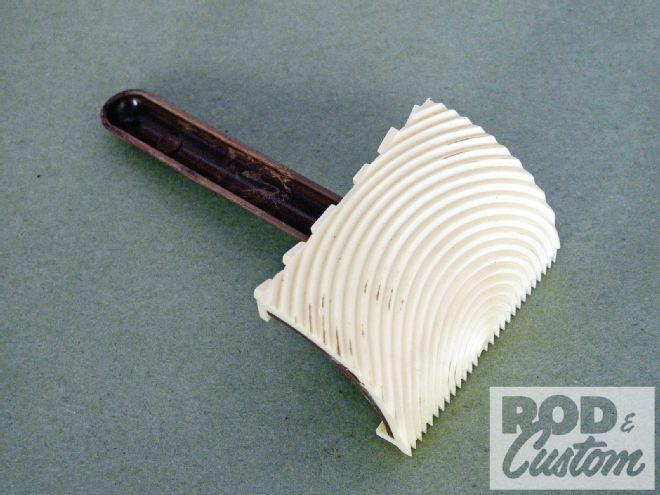

Let’s see, should we stay home, take care of business and maybe pay the bills, or load some supplies and cross the state to volunteer our time in a friend’s residential garage? This “no-brainer” began with one of them new-fangled electronic letters. The message came out of Livermore, California, from my friend, Sam Strube. Sam and his brothers, John and Matt, are all avid hot rodders and each of them have built a good handful of cars over the years. Like many of us, their interest was sparked by their father’s influence.
 First we’ll check stock on our “old-school” graining staples, such as 1 Shot lettering enamel, mineral spirits for reduction, and Penetrol as an optional hot-weather retarder. The grain I have in mind will likely be created with cheesecloth, but we’ll take along other graining tools like an assortment of sponges, fan brushes, cotton swabs, and a fallen feather just in case.
First we’ll check stock on our “old-school” graining staples, such as 1 Shot lettering enamel, mineral spirits for reduction, and Penetrol as an optional hot-weather retarder. The grain I have in mind will likely be created with cheesecloth, but we’ll take along other graining tools like an assortment of sponges, fan brushes, cotton swabs, and a fallen feather just in case.
In Sam’s own words, the aforementioned electronic letter went on to say, “I’ve been wanting to talk to you about an idea I have. See, back around 1973, my parents were putting our Model A coupe together—it’s the one that I have now. There was a local hotshot woodgrain guy in town, but Mom and Dad were budget-builders and they enjoyed doing their own work. They knew they wanted wood-grained garnish moldings, so Mom got some sponges and an antiquing kit and did the job herself.”
Sam continues, “Dad sold the coupe in 1990, and died in 1995. Fifteen years after Dad sold it, I found it on eBay! I brought it back home, untouched, almost like it was when he sold it—except the garnish moldings had been painted right over Mom’s woodgrain. So, I had this idea to ask Mom if she would redo them for me. Since the car is a keeper, I’d love to have her redo them. But, she would need some guidance. Do you ever do seminars on that sort of thing? I think it would make a good story.”
Well, being the sentimental sucker that I tend to be, I thought it would make a good story too. And in a previous life, I actually had thrown a seminar on the subject. It was more like a party at the paint store where I worked at the time, but we did demonstrate an easy graining technique, along with a hands-on how-to on flame jobs (and even “van craze” Saran Wrap murals in the warehouse that night), but back to woodgraining. In our area during the ’70s it was considered to be a “lost art” and there were only a few guys to go to for it. Since then, however, a whole new crop of graining gurus have emerged, and with the added benefit of today’s modern automotive paint materials, such as PPG’s Envirobase, the new kids have elevated the once-lost art form to a higher-than-ever level—while pretty much leaving yours truly in the overspray.
 Now here’s an actual store-bought graining tool that we will not need on this particular job. This “rocker” is a good tool, which works well to produce a heart-grain effect, but only on flat enough surfaces. For a Model A dash rail and garnish moldings, this is not the hot tip.
Now here’s an actual store-bought graining tool that we will not need on this particular job. This “rocker” is a good tool, which works well to produce a heart-grain effect, but only on flat enough surfaces. For a Model A dash rail and garnish moldings, this is not the hot tip.
It had been a while since anyone had asked for a woodgrain job, or even a few tips on the subject like what we’re just about to share. Now realizing that we’re not all experienced in the ways of auto refinishing with state-of-the-art waterborne technology, let’s for the sake of simplicity revert back to the ol’ standby ’70s method, which I learned during my apprenticeship at McPeak Painting & Pinstriping in Riverside, California. Over his 56 years in the sign painting, pinstriping, and custom painting trades, Richard McPeak has mentored many an up-and-coming artist—a good number of whom have gone on to use and share the techniques that he pioneered. McPeak has since developed a new approach to woodgraining, which so far he’s reluctant to divulge, so once again we’ll go with what we know.